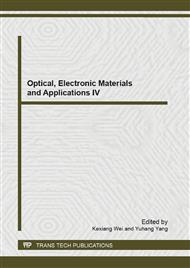p.233
p.239
p.244
p.250
p.255
p.260
p.265
p.270
p.276
Development and Validation of a LC–MS/MS Method
Abstract:
A simple, sensitive, selective, rapid, reproducible and specific liquid chromatography-tandem mass spectrometry (LC-MS/MS) method has been developed and validated for the identification and quantification of paroxetine (PAX) in human plasma,. Chromatographic separation was performed on XTerra RP18 (5 μm, 150 mm × 4.6 mm i.d.) column with mobile phase composed of 10 mM ammonium acetate containing 0.2% formic acid: methanol (30:70, v/v) at flow rate of 0.9 mL min-1. PAX and CZP were detected with proton adducts at m/z (amu) 330.1 192.1 and 327.2 270.1, in multiple reaction monitoring (MRM) positive mode. The method was validated over the concentration range of 0.05 - 30 ng mL-1. The lower limit of quantification (LLOQ) was 0.05 ng mL-1. The inter-run and intra-run precision was within 2.1-11.8% and 2.2-5.8%, respectively
Info:
Periodical:
Pages:
255-259
Citation:
Online since:
July 2013
Authors:
Keywords:
Price:
Сopyright:
© 2013 Trans Tech Publications Ltd. All Rights Reserved
Share:
Citation:


